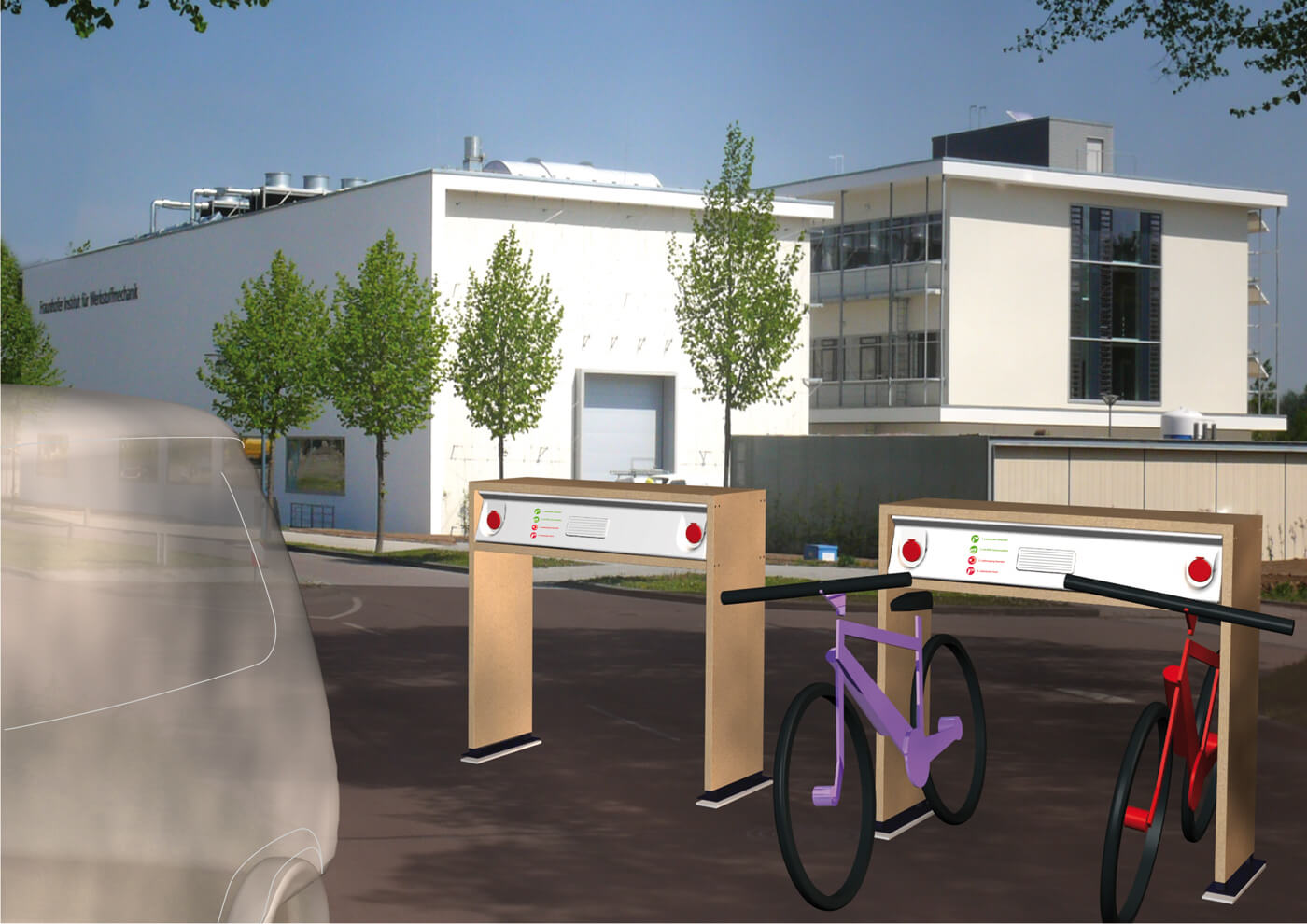Our urban landscape will soon be dominated by a new symbol: charging points for electric vehicles. Today, these points are often characterized by steel or aluminum coated posts. German researchers have now decided to improve the green nature of these points

The network of charging stations for electric vehicles in Germany is still relatively sparse, but the number of stations is gradually increasing. Most of the charging points on the sides of the roads are in the form of steel-coated posts. A group of researchers is trying to develop an alternative design based on environmentally friendly materials.
Our urban landscape will soon be dominated by a new symbol: charging points for electric vehicles. Today, these points are often characterized by steel or aluminum coated posts. German researchers have now decided to improve the green nature of these points. The researchers, in collaboration with an industrial company, are developing an alternative solution based on environmentally friendly materials. Their idea is to replace the protective steel coating on the cables, electrical outlets and switches with panels made of a composite material based on wood-plastic. Today, the main use of this type of reclaimed wood is in weather-resistant porch panels.
Wood-plastic composites (WPC, Wikipedia entry) are natural fiber composites that include seventy percent cellulose-based wood fibers from sustainable renewable sources and thirty percent plastic (thermoplastic polypropylene). Their advantages, apart from the high percentage of sustainable raw materials, are that they are fully recyclable and that they do not use tropical trees. These materials can be recycled again and again into new products and have a neutral carbon footprint (the amount of greenhouse gases emitted from any source). As one of the researchers explains: "Trees absorb considerable amounts of carbon dioxide from the atmosphere during their growth, and fix carbon in their fibrous fibers. Because of this, it is likely that the use of this material for the new application will result in reduced carbon dioxide emissions, compared to the use of steel."
Another advantage of the composite material, according to the researchers, is that its production is much more economical than the production of coating materials of steel or other metals. The composite material is produced through an extrusion process (extrusion, a method of manufacturing and shaping metal, or plastic, or aluminum, by compressing the material through an extrusion press) in which a mixture of wood fibers and thermoplastic resin are melted under conditions of high pressure and temperature and the resulting viscous product is compressed through a continuous press. Thanks to modern processing technologies, the fibers can be added to the mixture in their original state, without the need to first turn them into granules, a fact that allows avoiding an intermediate, high-energy phase and preserving the quality of the fibers. Since wood has a high thermal sensitivity, it must be processed at temperatures lower than two hundred degrees Celsius.
The covers are produced in the form of modular components that can be connected to each other as required to prepare a wide variety of different designs, thus allowing them to easily blend in with the design of the environment. Their modular structure also allows the panels to be easily disassembled for repairs.
Industrial design experts are already thinking about other possible new applications for these materials: "They could be used, for example, to assemble street furniture such as park benches or covered bus stops. Another idea is to integrate functional elements, such as cable grippers and cable control systems, into the components of the electric vehicle charging stations themselves. This is a completely applicable proposal since this material can be shaped into almost any shape, in contrast to the metallic coating used in the covers available today."
Still, the protective layer based on the new material must meet a number of particularly demanding requirements. It must be unbreakable and flexible enough to absorb a blow so that it is not damaged, and it must also withstand large changes in temperature, high levels of humidity and prolonged exposure to ultraviolet radiation.
To this end, the researchers examine samples of the material in a climate chamber in order to gauge its resistance to conditions of extreme temperatures, and to determine which additives or types of coatings provide the best protection against the vicissitudes of the weather. The researchers have almost completed building their first prototype of the protective cover based on the new material, and are about to begin experiments outside the laboratory. The researchers are convinced that the day will not be far away when charging stations for electric vehicles based on environmentally friendly materials will appear on every street corner.
The news about the study

3 תגובות
Not cars! In Hebrew there is no plural form for vehicle such as: weapons, bread, information, and the like,
Vehicles ….. Yuk
As a response to Itzik and later according to his words, electricity is not required to be transmitted through a plug and socket. It is also possible to transmit electricity through absolute galvanic separation through the hater, which is safer.
But the whole topic of the electric vehicle is a short- and medium-term patron, a longer-term solution see an article published on the Energy News website http://www.energianews.com/article.php?id=9184
What fun it is to push a plug into an electrical outlet in the pouring rain